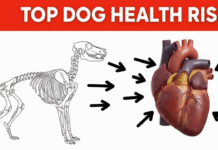Last Updated on May 15, 2024 by Dogs Vets
Top 20 interesting facts about dogs: Unleashing the Secrets of Dogs
Dogs. Our furry best friends, loyal companions, and masters of the adorable head tilt. But beyond the slobbery kisses and endless cuddles lies a fascinating world of canine wonder.
From their incredible senses to their historical significance, dogs are a treasure trove of intriguing facts. So, put down that chew toy (for a moment) and delve into this list of the Top 20 interesting facts about dogs!
1. The Superpower of Smell: A Nose Knows No Bounds
A dog’s sense of smell is legendary, and for good reason. Their wet noses contain millions of scent receptors, making their olfactory prowess millions of times greater than ours. Imagine being able to smell a single teaspoon of sugar across a football field! This incredible ability is why dogs are trained for search and rescue missions, sniffing out drugs and explosives, and even detecting medical conditions like cancer.
2. Hearing the Unheard: A Symphony for Super Ears
Not only can dogs smell like bloodhounds, but they can hear like champions too. Their ears can detect a wider range of frequencies than humans, picking up sounds at much higher pitches. This explains why your pup might perk up at a whistle you can’t even perceive.
3. Tail Talk: Decoding the Wag
We all know a happy wag means a happy pup, but did you know that the direction and speed of a wag can tell you a whole story? A high, fast wag usually indicates excitement or playfulness, while a low, slow wag might signal nervousness or submission. Understanding tail language can help you better interpret your dog’s emotions and moods.
4. Dream Weaver: The Adventures of Canine Slumber
Just like us, dogs dream! During their REM sleep cycles, their paws might twitch, and their eyes might flutter beneath closed lids. Research suggests these dreams might be a way for them to process the day’s events, practice skills, and consolidate memories.
Next time you see your dog napping with little whimpers or barks, you might just be witnessing a canine dreamscape adventure!
5. The Science of Love: Oxytocin Overload
That warm, fuzzy feeling you get when you cuddle your dog isn’t just imagination. Studies show that interacting with dogs triggers the release of oxytocin, the love hormone, in both humans and dogs. This hormonal bond strengthens the connection between us and our furry companions.
6. More Than Meets the Eye: A Colorful World for Dogs (Maybe)
Contrary to popular belief, dogs aren’t completely colorblind. While they don’t see the full spectrum of colors we do, they can differentiate between shades of yellow and blue. Imagine the world looking like a beautiful sunset painting!
7. Wet Work: The Secret Behind the Sniff
Ever wondered why your dog’s nose is always so wet? It’s not just because they love to shove it into every interesting nook and cranny. The moisture helps them absorb scent particles more effectively. Think of it like a built-in scent diffuser for their super sniffer!
8. Talking in Tongues: The Language of Woofs and Wags
While dogs may not speak our language, they have a complex communication system of their own.
From vocalizations like barks, whines, and growls to body language cues like tail wags, ear positions, and facial expressions, dogs convey a wealth of information. With a little observation and patience, you can learn to “speak dog” and understand what your furry friend is trying to tell you.
9. Smarty Pants: Canine Cognitive Abilities
Don’t underestimate your dog’s intelligence! Studies have shown that dogs can understand and remember hundreds of words and gestures. Some breeds, like Border Collies, are known for their exceptional problem-solving skills.
10. Built for Work: A History of Canine Companionship
The bond between humans and dogs goes back millennia. Archaeological evidence suggests that dogs were domesticated as early as 15,000 years ago. These early canine companions likely helped with hunting, herding, and guarding.
Today, dogs continue to work alongside humans in various roles, from assisting law enforcement to providing emotional support.
11. Built to Last: The Lifespan of Our Canine Companions
The lifespan of a dog varies depending on breed, size, and overall health. However, smaller dogs tend to live longer than larger breeds. The oldest dog ever recorded was an Australian Cattle Dog named Bluey, who lived to the ripe old age of 29 years!
12. Breeds Galore: A Canine Rainbow
There are over 200 recognized dog breeds in the world, each with unique characteristics, appearances, and temperaments. From the majestic Great Dane, towering over six feet tall, to the pint-sized Chihuahua, fitting perfectly in your purse, there’s a breed to suit every lifestyle.
This incredible diversity allows dogs to fulfill various roles, from working sheepdogs in the Scottish Highlands to cuddly lapdogs offering companionship to seniors.
13. Built for Speed: The Fastest Pups on the Planet
Not all dogs are created equal when it comes to speed. The Greyhound, with its sleek build and powerful legs, reigns supreme as the fastest dog breed. These canine speed demons can reach up to 70 kilometers per hour (43 miles per hour) in short bursts!
14. Highly Trained Heroes: The Many Talents of Working Dogs
Beyond companionship, dogs possess a remarkable capacity for training and specialization. Working dogs play a vital role in various fields, including:
- Search and Rescue: With their incredible sense of smell, dogs can locate missing people in disaster zones or vast terrains.
- Law Enforcement: Trained to detect drugs and explosives, K-9 units are invaluable assets for police forces.
- Therapy Dogs: Providing emotional support and comfort to people in hospitals, nursing homes, and even courtrooms, therapy dogs can make a world of difference.
- Guide Dogs: Trained to assist visually impaired individuals, guide dogs offer independence and mobility to their human partners.
15. Honorary Astronauts: Canines in Space
Believe it or not, dogs have ventured beyond our planet! Laika, a stray dog from Moscow, became the first living creature to orbit the Earth in 1957 aboard Sputnik 2. While Laika’s journey wasn’t intended for survival, it paved the way for future space exploration with animals.
16. Culinary Quirks: What Dogs Like to Eat (Besides Your Shoes)
Dogs are natural scavengers, and their dietary needs differ from ours. A well-balanced dog food formulated for their specific age, breed, and activity level is essential.
However, some human foods can be healthy treats for dogs in moderation, including carrots, apples, and blueberries. It’s important to consult your veterinarian before introducing any new food to your dog’s diet.
17. Keeping Up with the Joneses: The Rise of Designer Dogs**
Mixed breed dogs, often called “designer dogs,” are becoming increasingly popular. These pups are a result of breeding different purebred dogs.
While some argue that mixed breeds can be healthier due to greater genetic diversity, it’s important to remember that any dog, regardless of breed, can develop health problems. Responsible breeding practices and proper veterinary care are crucial for all dogs.
18. Communication Breakdown: Common Training Mishaps
Dog training can be a rewarding experience for both you and your furry friend. However, there are some common pitfalls to avoid:
- Inconsistency: Dogs thrive on routine and clear expectations. Mixed signals from you can lead to confusion and frustration.
- Positive Reinforcement is Key: Rewarding good behavior is far more effective than punishing bad behavior. Positive reinforcement training techniques create a positive association with following commands.
- Patience is a Virtue: Learning takes time. Be patient with your dog and celebrate small victories along the way.
19. Beyond Cuteness: The Responsibilities of Dog Ownership
Bringing a dog into your life is a big commitment. Dogs require regular walks, playtime, training, and affection. They also need proper veterinary care, including vaccinations, parasite prevention, and checkups.
Before welcoming a dog into your home, consider your lifestyle and ensure you can provide for their needs throughout their life.
20. Unconditional Love: A Bond Like No Other
Dogs offer us companionship, loyalty, and unconditional love. Their playful spirit, unwavering devotion, and ability to make us smile even on the toughest days make them irreplaceable members of the family. The bond between humans and dogs is truly special, enriching our lives in countless ways.
FAQs: Unveiling the Mysteries of Our Canine Companions
Here are some of the most common questions people have about dogs, answered to shed light on these fascinating creatures:
1. Why do dogs lick our faces?
There are a few reasons why dogs lick our faces. It can be a sign of affection, a way of greeting us, or a submissive behavior. Puppies often lick their mothers’ faces as a way of showing respect and asking for food. Additionally, some dogs might lick to appease us or get our attention.
2. Do dogs dream in color?
Unfortunately, we can’t definitively say whether dogs dream in color or not. Since we can’t ask them directly, it remains a scientific mystery. However, considering their limited color vision, it’s possible their dreams might be dominated by emotions and sensations rather than vibrant colors.
3. Why do dogs howl?
Howling is a natural form of communication for dogs. They might howl to communicate with other dogs, express frustration or loneliness, or even greet sirens or emergency vehicles with a similar sound.
4. Can dogs understand human emotions?
Research suggests that dogs are remarkably attuned to human emotions. They can pick up on our body language, facial expressions, and even the tone of our voice. This ability to understand our feelings strengthens the bond between us and allows them to offer comfort and support during difficult times.
5. How often should I bathe my dog?
The frequency of bathing your dog depends on several factors, including breed, coat type, and activity level. Generally,most dogs don’t need baths more than once a month. Over-bathing can strip their fur of natural oils and irritate their skin.Consulting your veterinarian can help you determine the ideal bathing schedule for your specific dog.
6. Is it okay to give my dog table scraps?
While occasional table scraps might seem harmless, it’s important to be mindful of what you feed your dog. Many human foods can be unhealthy or even toxic for dogs. Chocolate, grapes, onions, and cooked bones are just a few examples. A veterinarian can advise you on safe and healthy human food options for your dog in moderation.
7. Why does my dog chase its tail?
There are several reasons why a dog might chase its tail. Sometimes, it’s simply a playful behavior, a way to expend energy. However, it could also indicate boredom, anxiety, or underlying medical conditions. If your dog’s tail chasing seems excessive or compulsive, consult your veterinarian to rule out any health issues.
By understanding these intriguing facts and addressing common questions, we can deepen our connection with our canine companions and ensure they live happy, healthy lives by our side.
Fact Check
We strive to provide the latest valuable information for pet lovers with accuracy and fairness. If you would like to add to this post or advertise with us, don’t hesitate to reach us. If you see something that doesn’t look right, contact us!

















